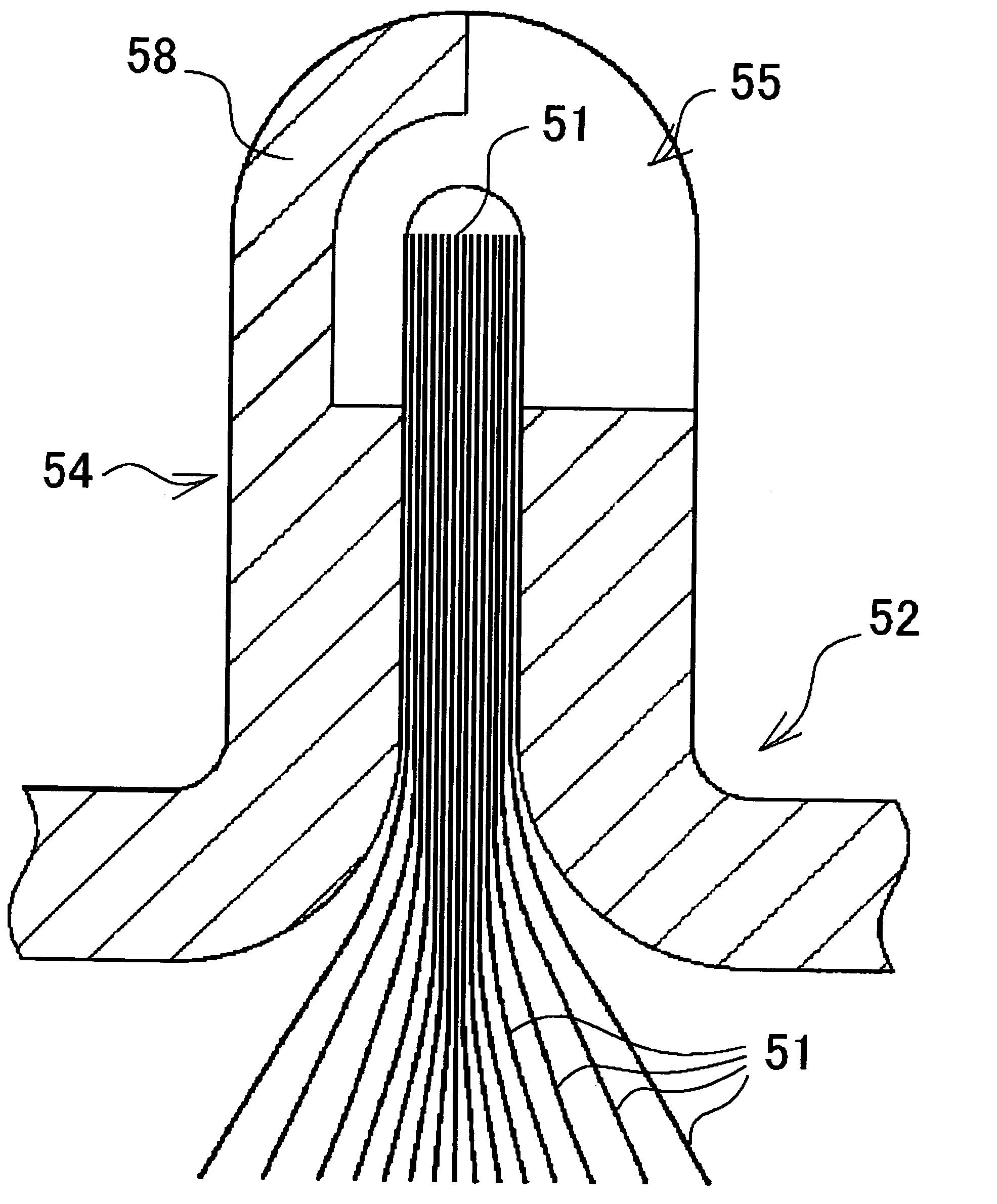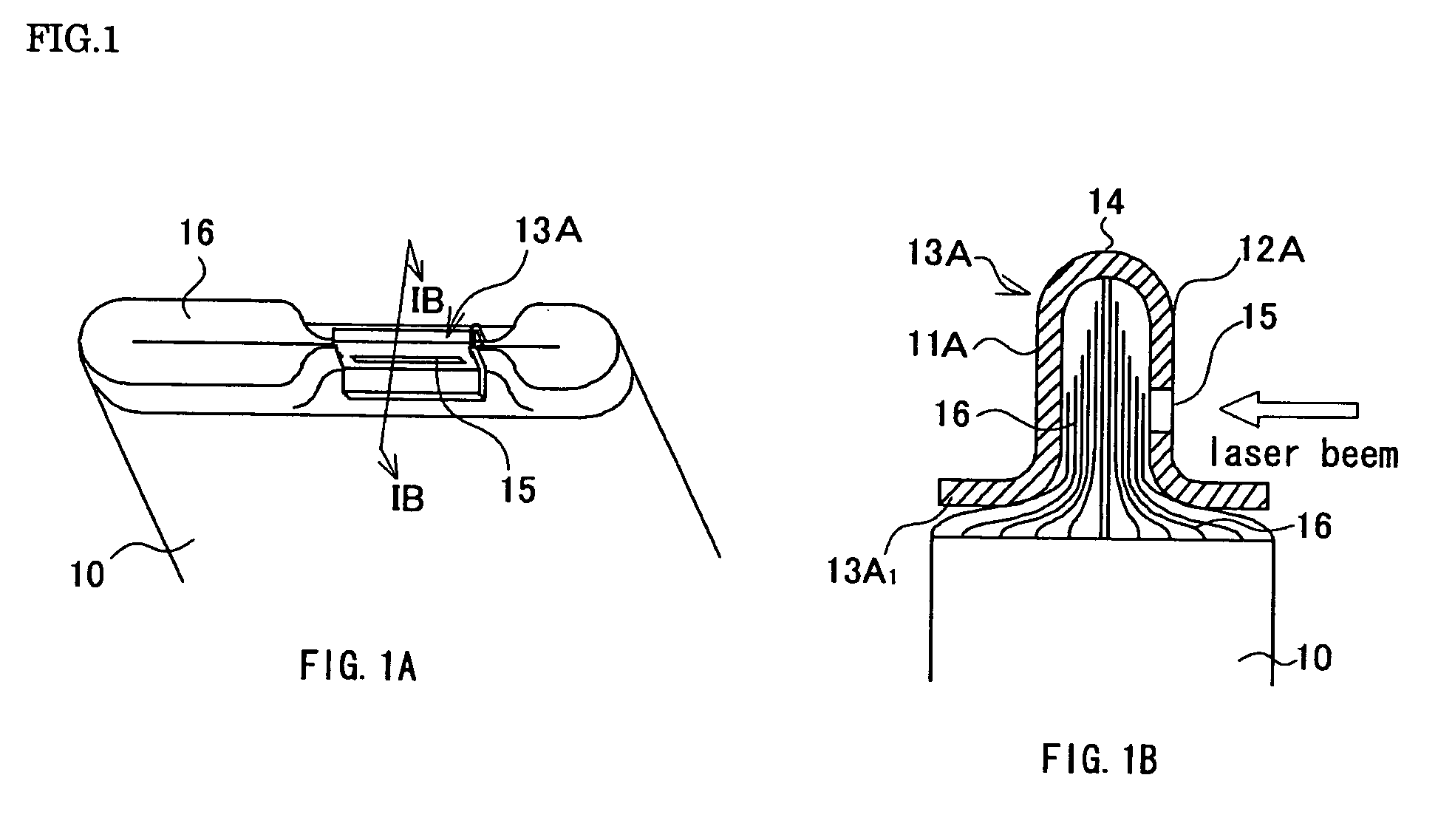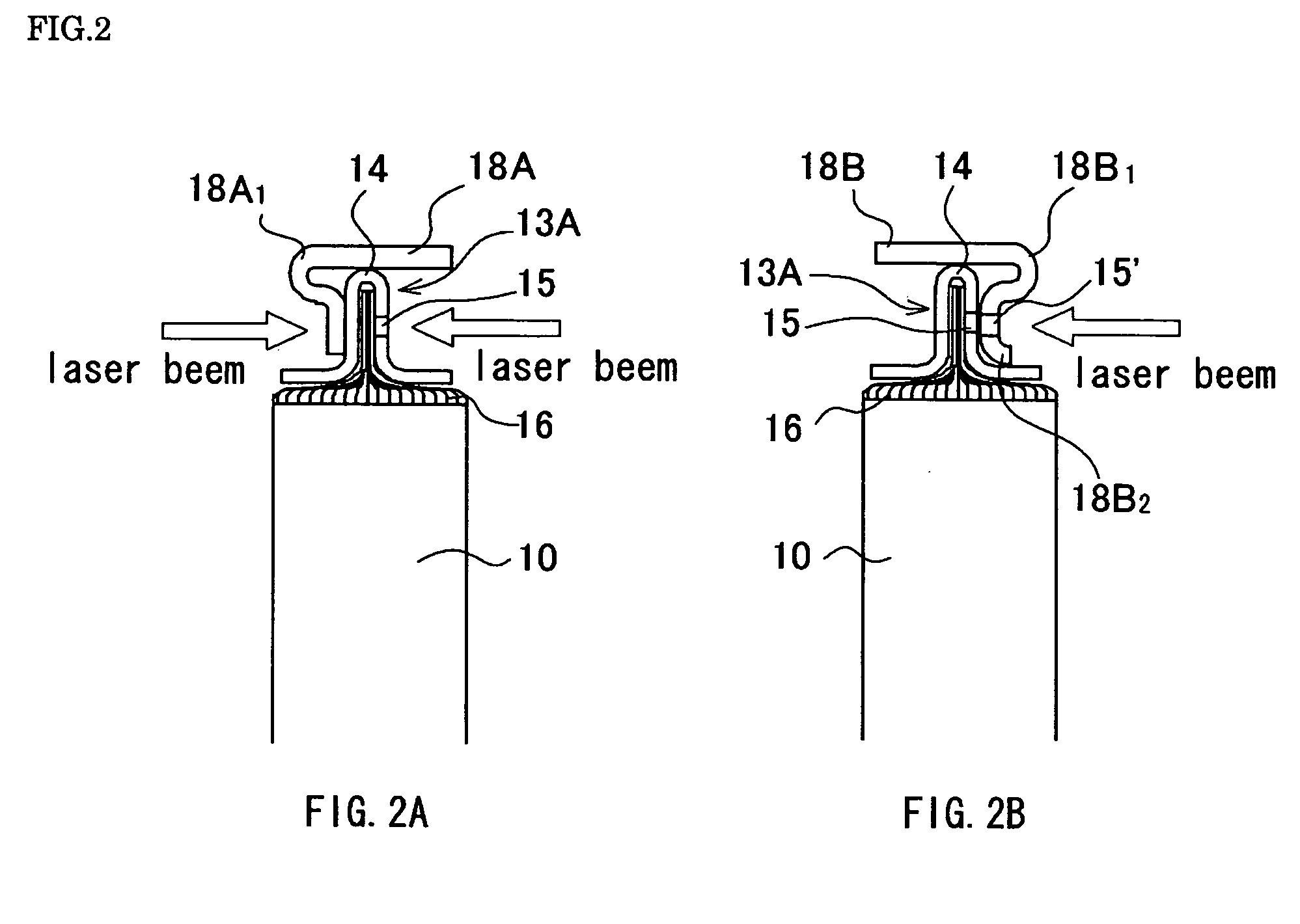Prismatic battery
a battery and prismatic technology, applied in the field of prismatic batteries, can solve the problems of large heat generated by the contacting resistance between the battery's substrate and current collecting body, difficult to disconnect the weld, and easy to be disconnected, so as to reduce the possibility of internal short circuit
- Summary
- Abstract
- Description
- Claims
- Application Information
AI Technical Summary
Benefits of technology
Problems solved by technology
Method used
Image
Examples
first embodiment
[0064] A prismatic battery of the first embodiment will be described with reference to FIGS. 1A through 3. FIG. 1A is a perspective view of a state wherein a pressing plate is mounted to a rolled electrode group in a flat form, and FIG. 1B is a cross-sectional view of FIG. 1A taken along a line IB-IB. FIG. 2A is a state wherein a current collecting body not having a further slit is mounted on the pressing plate mounted to the electrode group in a flat form of FIG. 1A, and FIG. 2B are also a state wherein a current collecting body having a slit is mounted, and are cross-sectional view corresponding to the cross-sectional view of FIG. 1A taken along a line IB-IB, respectively. FIG. 3 is a partial cross-sectional view of a prismatic battery of the first embodiment wherein an electrode group in a flat form is mounted with the current collecting body having a slit shown in FIG. 2B incorporated into a battery package.
[0065] The electrode group 10 in a flat form of the prismatic battery a...
second embodiment
[0074] If the rolled electrode group 10 in a flat form becomes thicker, the number of the exposed sections 16 of the positive electrode substrates or the negative electrode substrates inserted into a gap of the pressing plate 13A increases in the features of the pressing plate 13A as shown in the first embodiment, giving rise to the possibility that not all of the exposed sections 16 will fit into the gap of the pressing plate 13A unless an exposed margin is enlarged. Therefore, the features of a prismatic battery mounting a current collecting body to a thick rolled electrode group in a flat form are described as the second embodiment, with reference to FIGS. 4A and 4B. FIG. 4A is a perspective view in a state wherein a current collecting body is mounted to a rolled electrode group in a flat form of a prismatic battery of the second embodiment, and FIG. 4B is a cross-sectional view of FIG. 4A taken along a line IVB-IVB. In FIGS. 4A and 4B, the same reference numerals are given to de...
third embodiment
[0078] A prismatic battery of the third embodiment applies to a thick rolled electrode group 10 in a flat form, as in the case of the second embodiment, but which integrally combines s similar features to the pressing plate 13A of the prismatic battery in the first embodiment that was used as a pressing plate. Features of a current collecting body mounted to a rolled electrode group in a flat form of a prismatic battery in the third embodiment shall be described with reference to FIG. 5. FIG. 5 is a cross-section showing a state wherein a current collecting body is mounted to a rolled electrode group in a flat form of a prismatic battery in the third embodiment, and corresponding to the cross-sectional view of FIG. 4A taken along a line IVB-IVB. The same reference numerals are given and described to the same component parts of the current collecting body 18C of the prismatic battery in the second embodiment.
[0079] The electrode group 10 in a flat form of the prismatic battery in th...
PUM
| Property | Measurement | Unit |
|---|---|---|
| thickness | aaaaa | aaaaa |
| thickness | aaaaa | aaaaa |
| thickness | aaaaa | aaaaa |
Abstract
Description
Claims
Application Information
 Login to View More
Login to View More - R&D
- Intellectual Property
- Life Sciences
- Materials
- Tech Scout
- Unparalleled Data Quality
- Higher Quality Content
- 60% Fewer Hallucinations
Browse by: Latest US Patents, China's latest patents, Technical Efficacy Thesaurus, Application Domain, Technology Topic, Popular Technical Reports.
© 2025 PatSnap. All rights reserved.Legal|Privacy policy|Modern Slavery Act Transparency Statement|Sitemap|About US| Contact US: help@patsnap.com



